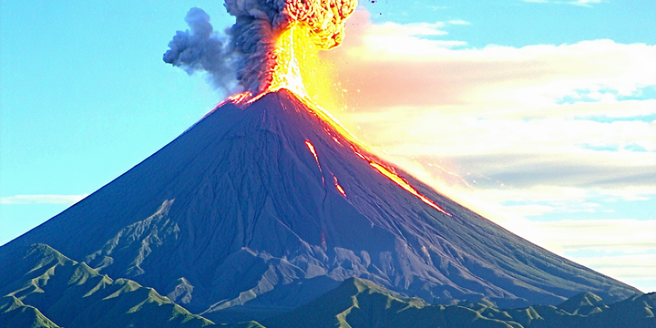
Understanding Volcanic Activity and Its Impact
Volcanoes are critical to our ecosystem, shaping landscapes and influencing the atmosphere. Their eruptions can be destructive, affecting lives, and economies. Therefore, understanding volcanic activity is crucial. It involves studying geological phenomena like magma movement, tectonic plate interactions, and seismic activities. These factors collectively determine a volcano’s behavior. Analyzing these elements helps predict eruptions, allowing authorities to implement evacuation plans, minimizing the loss of life and property. Researchers focus on key indicators, including gas emissions and ground deformation. Such data have improved prediction accuracy, altering how communities coexist with these natural giants. Overall, understanding volcanic activity is not just a geological necessity but also a societal priority, ensuring safety and sustainability in vulnerable regions.
The Science Behind Volcano Monitoring
Volcano monitoring is a complex science integrating various disciplines. Researchers utilize seismographs to detect ground vibrations, which signal volcanic activity. Infrasound sensors capture low-frequency sounds, undetectable to humans, produced by eruptions. Additionally, geodetic measurements determine ground deformation, revealing magma chamber dynamics. Gas monitoring is also vital; escaping volcanic gases indicate unrest. Sulfur dioxide, for example, helps predict potential eruptions. Satellites contribute real-time data, enhancing traditional on-site observations. Despite technological advances, volcano monitoring continues to face challenges; unpredictable volcanic behavior necessitates comprehensive datasets, making integration crucial. Expertise in petrology, seismology, and atmospheric science is vital to interpreting these signals accurately. Ultimately, expanding technological tools and cross-disciplinary collaboration are imperative for improving volcano monitoring, ensuring timely alerts, and preventing disasters.
Innovative Technologies in Eruption Prediction
Recent advancements have transformed eruption prediction. Technologies like drones, for instance, allow researchers to gather critical data from hazardous terrains without endangering human lives. Equipped with multispectral cameras, drones provide insights into geothermal activity, gas composition, and thermal anomalies. Another innovation, artificial intelligence, streamlines data analysis from complex volcanic activities. AI models, using historical data, can predict eruption likelihood with increased accuracy. Ground-based radar systems track real-time surface deformation, offering essential clues about magma movement. These emerging technologies, improving predictive capabilities, have revolutionized our approach to eruption forecasting. Collaborative frameworks between tech companies and researchers are critical in refining these tools further. Although less visible, technological innovations underpin efforts to mitigate volcanic risks, emphasizing their potential to save lives and enhance resilience.
The Role of Satellites and Remote Sensing
Satellites and remote sensing are pivotal in eruption prediction. Advanced satellites capture high-resolution images of volcanic regions, tracking changes over time to detect anomalies. They provide critical data on ground deformation, gas emissions, and thermal variations, which are crucial for risk assessment. Techniques like Interferometric Synthetic Aperture Radar (InSAR) precisely measure surface deformations due to magma movement. Additionally, remote sensing infers ash plume dispersion, aiding in air traffic management. Satellite data integration with ground observations enhances prediction models, offering comprehensive insights into volcanic behavior. The global coverage of satellites is particularly beneficial for monitoring remote or poorly accessible regions, where direct observations are challenging. As technological advances continue, satellites’ roles in volcanic risk management are expected to expand, reinforcing preparedness, response strategies, and reducing eruption-related impacts.
Machine Learning and Data Analysis in Volcanology
Machine learning is transforming volcanology, offering novel ways to analyze large datasets from varied sources. These data include seismic activity, gas emissions, and geothermal information. Machine learning algorithms identify patterns and correlations invisible to human analysts. For instance, neural networks use historical eruption data to predict future events more accurately. These models can consider multiple variables simultaneously, providing comprehensive predictive insights. Additionally, data analysis platforms streamline the integration of satellite and ground-based observations, improving the real-time monitoring capabilities. Automated systems recognizing subtle precursors to eruptions are particularly cutting-edge, facilitating timely alerts. However, a significant challenge lies in managing diverse data types and ensuring model accuracy across distinct volcanic environments. Continued advancements in data analytics promise to refine eruption prediction and enhance overall volcanic risk mitigation strategies.
Challenges and Future Directions in Prediction
Predicting volcanic eruptions remains a formidable task, despite technological strides. One key challenge is the inherent unpredictability of volcanic systems, due to their complex and varied nature. Each volcano exhibits unique behaviors, requiring tailored monitoring strategies. Data limitations, especially in remote areas, hinder precise predictions. Additionally, integrating disparate data forms into cohesive models can be arduous. Future directions emphasize interdisciplinary integration and advanced modeling techniques. Enhanced collaboration between geoscientists, data experts, and policy-makers is essential. Further, developing real-time data processing and AI applications may offer new predictive insights. Innovative educational programs aim to cultivate awareness and readiness in at-risk communities, minimizing potential impacts. By investing in these areas, the scientific community hopes to overcome current limitations, transforming our capacity to foresee and manage volcanic hazards, ultimately safeguarding communities and resources.
